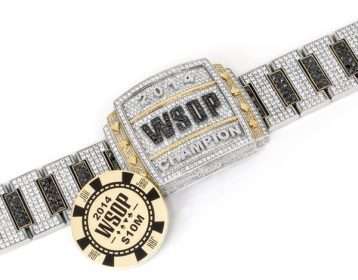WSOP Changes Blind Structure of Four Events
The World Series of Poker is constantly trying to improve. WSOP officials listen to players and, when appropriate, make changes to the most anticipated poker festival of the year in an attempt to make the proceedings better for everyone. Prior to the 2015 World Series of Poker, a number of adjustments were made to events with buy-ins ranging from $1,000 to $5,000 in the hopes of giving competitors more opportunity to play poker, but unfortunately, these adjustments didn’t work out. On Thursday, the WSOP announced that a few of the remaining events have been tweaked to try to right those wrongs.
Originally, starting stacks for many tournaments were increased by two-thirds, late registration was extended by two levels, and more blind levels were added in the beginning of the events. The intention of these changes was admirable. WSOP officials wanted to give people more “play,” that is, give players more chance to actually make strategic moves, play small ball, and really “play poker” before the blinds got too big for the stacks and players just needed to start going into “all-in or fold” mode. For recreational players, it was supposed to be a positive because they would theoretically get to enjoy playing poker at the WSOP longer than they would have before the changes, and the more skilled players now have more room to do what they want to do: play great poker.
In a sense, that’s what happened. Larger stacks and more levels in the beginning certainly let people hang around longer. But that was the problem. The extended play entrants got in the early stages of the tournament really didn’t mean anything. All it did was make the tournament last longer. More players made it to Day 2 in many events, therefore making it take longer to get to the money, and oftentimes causing events to last an extra day. Recreational players still never really got close to a bracelet, but the pros, who are trying to make the most out of every tournament, have to log longer and longer hours just to earn a living. And, at the end of tournaments when every hand can mean swings of tens and hundreds of thousands of dollars, there wasn’t ENOUGH play. Too many chips were at stake each hand.

Jack Effel
Players appreciated the effort made by the WSOP, but they also complained about what was happening. Fortunately, the WSOP was listening and corresponding changes have been made. WSOP Tournament Director Jack Effel announced Thursday that the structures for the following $1,500 buy-in Fixed-Limit tournaments have been changed:
Event #39: $1,500 Ten-Game Mix
Event #48: $1,500 Seven Card Stud
Event #52: $1,500 Dealers Choice
Event #65: $1,500 Seven Card Stud Hi-Lo 8 or Better
Effel said on Twitter that one level in each of the 100-200, 150-300, and 200-400 will be eliminated; previously each of those were double levels. At the same time, one 250-500, one 1,200-2,400, and one 10,000-20,000 blind level will be added to the event structure. Thus, the tournaments should be sped up in the beginning and slowed down closer to the end.
Effel told PokerNews.com, “I would have changed them sooner if I could have gotten approval to get them done. I know that these events were running a little bit long, but I still wanted them to have enough play. I thought it was a reasonable solution to keep the same number of levels to get it done, but reallocate where those levels actually go.”
As he said, he needed approval to make the changes; he couldn’t just make them unilaterally. Thus, he had to go to the Nevada Gaming Control before he could make any announcement. Of course, the NGCB approved the decision and the structure changes were made the very day Event #39 began.
Again, talking to PokerNews, Effel added:
It was a simple fix. I just wanted to make it right for the guys for the last four events. I damned sure don’t want anybody going home feeling like they were getting killed having to play too long. That was no one’s intention and by no stretch of the imagination what we were trying to accomplish. We were simply trying to accomplish a better structure for more players and removing any chance they would wind up feeling like they were coming in to play with a bunch of sharks with no chance to win. That was the whole purpose.
Of course, there is the chance that some players who had already registered for one of the altered tourneys wouldn’t like the changes. Event #39 was actually just about to start when the announcement was made. It appears, though, that anyone who had registered and didn’t like the news could back out and receive a refund. Effel told Bluff:
Everything is supposed to be submitted ahead of time and any time you have any kind of changes, they have to be vetted and announced so people know about it. That’s the main thing, you don’t want to mislead people. Give them notice and the opportunity to say, “Hey, I want to play or I don’t want to play.” That’s really GCB’s concern, they want to make sure that you have given people notice of new rules and, in case anyone is not happy with that, at least you let them know ahead of time.

















COMMENTS